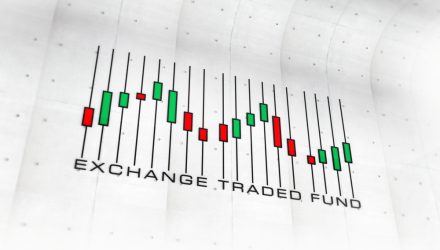An ETF’s trading volume is not the sole or even the best determinant of its liquidity.
In a recent conference call with American Century’s Senior Vice President Ed Rosenberg and VP Sandra Testani, the firm sat down to, among other things, dispel several common myths surrounding ETF liquidity.
As investors increasingly pour assets into ETFs – new net flows reached a record $65 billion in May – many are still gauging ETF liquidity through the wrong lens. Using trading volumes to judge how easy it will be to buy and sell is common practice for individual stocks, but an ETF behaves differently, and therefore cannot be judged in the same manner.
How ETF Liquidity Differs from a Stock’s
Since ETFs are baskets of securities that trade continuously throughout market hours, they’re able to shift dynamically to meet market trends.
“This is largely due to the ability of an ETF to issue or withdraw shares, according to supply and demand dynamics among investors,” explains American Century.
Because the ETF can alter the number of shares available as needed, it’s not accurate to measure liquidity by trading volume alone.
What’s more, the liquidity of the ETF is not entirely defined by how the vehicle itself trades on an exchange, but also by the trading patterns of the underlying securities it contains. If the underlying securities exhibit robust liquidity, the liquidity of the ETF itself will be heightened.
As a result, on-screen liquidity metrics are indicators only of “what already has traded, not what could have traded,” explains American Century.
NAVs Don’t Matter as Much When Measuring Volume
Another key point: the trading price, or handle, of an ETF can increase volume—without providing much impact on liquidity.
“Share volume increases dramatically in lower-priced ETFs,” states American Century. “The lower the share price, the easier it is to demonstrate high volume.”
For example, the share price for a new fund launch can range from $10 to $100. An investor with a set $10,000 to spend can therefore purchase more shares of the cheaper ETF than the more expensive one. That, in turn, leads to a larger trade size – and the perception of higher volume.
“NAV plays a huge part in ETF volumes, particularly when higher-priced ETFs compete against ETFs with share prices at the lower end of the spectrum,” said the firm. “While it appears higher-priced ETFs have lower volumes, it’s really the actual dollars traded that matter.”
American Century Investments handles more than $230 billion in assets. It was also the first asset manager to introduce semi-transparent, actively managed ETFs to investors and the first to launch actively managed environmental, social, and governance (ESG) ETFs back in 2020.
For more news, information, and strategy, visit the Core Strategies Channel.


